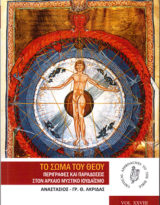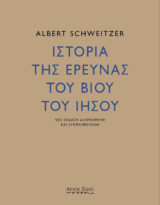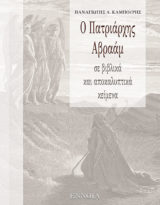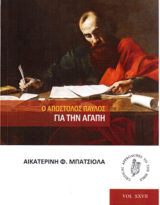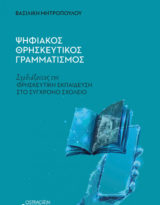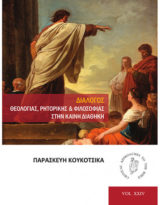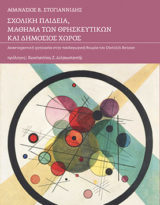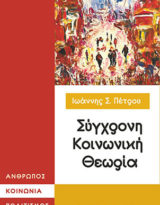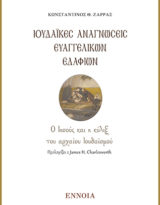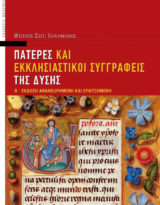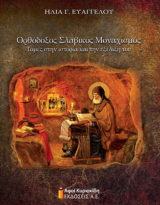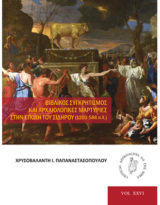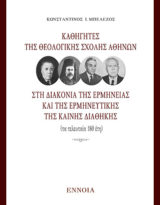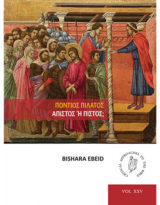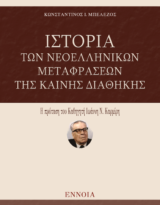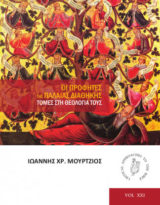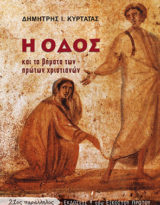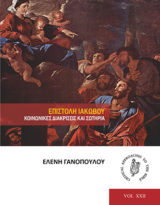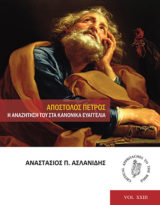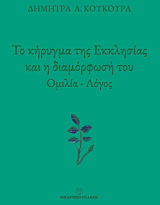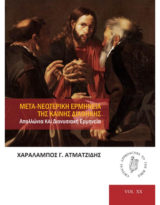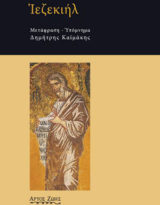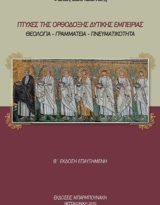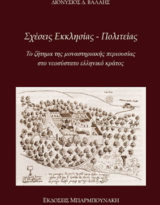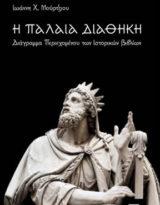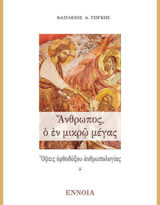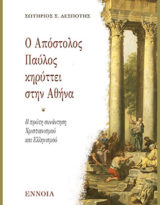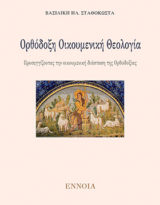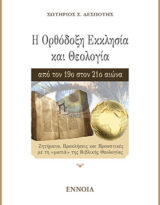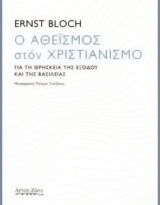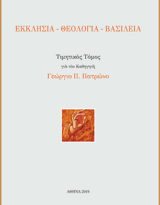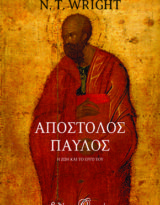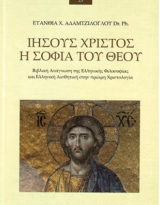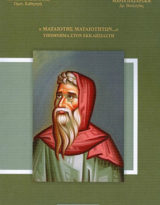Προλογίζει ο πρώην Γενικός Γραματέας του Παγκοσμίου Συμβουλίου Εκκλησιών Konrad Raiser
 Since the 2010 centenary celebrations of the famous World Mission Conference at Edinburgh in 1910 and the subsequent meeting of the Conference on World Mission and Evangelism of the World Council of Churches at Manila 2012 the ecumenical discussion on mission has entered a new phase. A new ecumenical affirmation on mission and evangelism “Together towards Life: Mission and Evangelism in Changing Landscapes” will be presented to the forthcoming 10th General Assembly of the World Council of Churches at Busan/Republic of Korea. It has clearly benefitted from the broadening of the circle of partners in the discussion on mission, including now not only recognized Orthodox and Roman Catholic, but also Pentecostal and Evangelical representatives from all world regions.
Since the 2010 centenary celebrations of the famous World Mission Conference at Edinburgh in 1910 and the subsequent meeting of the Conference on World Mission and Evangelism of the World Council of Churches at Manila 2012 the ecumenical discussion on mission has entered a new phase. A new ecumenical affirmation on mission and evangelism “Together towards Life: Mission and Evangelism in Changing Landscapes” will be presented to the forthcoming 10th General Assembly of the World Council of Churches at Busan/Republic of Korea. It has clearly benefitted from the broadening of the circle of partners in the discussion on mission, including now not only recognized Orthodox and Roman Catholic, but also Pentecostal and Evangelical representatives from all world regions.
It is in this context that the present publication on “Orthodox Perspectives on Mission” comes as a welcome and timely contribution to the renewed efforts to articulate a common understanding of the missionary vocation of the Christian community. The editors of the Regnum Edinburgh Centenary Series, and Petros Vassiliadis as the editor of the volume, deserve grateful recognition for making this valuable compilation of Orthodox voices on mission available. For too long the Orthodox churches with their particular and very rich history and tradition of missionary outreach have remained on the side-lines of Christian efforts for cooperation in mission and evangelism.
This has changed during the last 40 years, not least thanks to initiatives of the World Council of Churches with the aim to encourage Orthodox participation in the missiological discussion through a series of Orthodox consultations on various mission topics and by establishing a special desk for Orthodox studies and relationships in mission in the secretariat of its Commission on World Mission and Evangelism. The fruits of these efforts have been shared in several earlier publications. These include e.g. “Martyria/Mission. The Witness of the Orthodox Churches Today”, ed. by Ion Bria (Geneva 1980); “You Shall be My Witnesses. Mission Stories from the Eastern and Oriental Orthodox Churches”, ed. by George Lemopoulos (Katerini 1993); and “The Liturgy after the Liturgy. Mission and Witness from an Orthodox Perspective”, ed. by Ion Bria (Geneva 1996).
The present volume can therefore build on an already relatively consolidated consensus regarding the specific Orthodox perspectives on mission. In his extensive introductory remarks the editor, Petros Vassiliadis, explains the genesis and purpose of the publication and offers an initial exposition of the parameters of the Orthodox perspectives. As he points out, the understanding of mission in the context of the Orthodox tradition is intimately related to the ecclesiological self-understanding of the Orthodox churches, especially the central significance attributed to the Eucharistic liturgy. He further underlines that an adequate explanation of the Orthodox perspectives has to consider the sense of a living tradition as well as the trinitarian basis of all Orthodox theology and should further take full account of the pneumatological, eschatological and cosmic dimensions. This means that any attempt to offer Orthodox perspectives on mission inevitably leads into the very core of the Orthodox ecclesial tradition.
It is this conviction which has guided the selection of papers and articles by eminent Orthodox theologians for part one of the present volume, entitled the “Orthodox Heritage”. Most of these titles have been published previously and some of them have been included in earlier collections of significant Orthodox contributions to the ecumenical movement (e.g. “The Orthodox Church in the Ecumenical Movement. Documents and Statements 1902-1975”, ed. by Constantin Patelos. Geneva 1978 ). However, this present compilation is particularly valuable since it includes classical titles, like the essay by George Florovsky on “The Church: Her Nature and Task” or the address by Nikos Nissiotis on “The Witness and Service of Eastern Orthodoxy to the One Undivided Church” presented to the WCC assembly at New Delhi (1961), as well as contemporary voices by Emmanuel Clapsis, K.M. George or Petros Vassiliadis. It reflects the positions of senior hierarchs, like the Ecumenical Patriarch Bartholomew and Catholicos Aram I and embraces both the Eastern and the Oriental Orthodox tradition. While any such selection will remain subjective and incomplete (unfortunately the Russian Orthodox Church is not represented), it is particularly important that the presentation of Orthodox perspectives on mission opens with the magisterial paper by Archbishop Anastasios (Yannoulatos), the pre-eminent Orthodox missiologist and member of the presidium of the WCC, and that the addresses by Gorge Khodr, John Meyendorff and John Zizioulas have been included which have had a lasting impact on the ecumenical discussion.
Part two of the volume groups the main Orthodox presentations to the centenary conference at Edinburgh 2010 as well as papers that had been prepared as part of the study processes leading up to the Edinburgh event. The authors include many younger Orthodox theologians, both men and women, and their contributions allow the reader to take a closer look at some internal critical dialogue and analysis within the Orthodox community. This is true in particular with regard to the issues of mission among other faiths, the approach to theological education and the question of inculturation. While it is clear that these voices do not yet represent a dominant position in their respective churches, they clearly show that Orthodoxy has found its distinctive place in the ecumenical discussion on the missionary vocation of the church.
The publication of this volume just prior to the WCC assembly at Busan constitutes a well deserved tribute to the substantial contribution that the ecumenical discussion on mission and evangelism has received from Orthodoxy. The editor, Petros Vassiliadis, represents and continues in his own person the long tradition of this active Orthodox participation. It is hoped that his thoughtful preparation of this present volume will serve as an incentive to carry this tradition forward into the future.
Konrad Raiser, former General Secretary of the WCC
Berlin, August 2013
Ακολουθεί η εισαγωγή που εκπονήθηκε από τον Ομότιμο Καθηγητή του Τμήματος Θεολογίας του ΑΠΘ Πέτρο Βασιλειάδη και αναλυτική παρουσίαση των περιεχομένων του τόμου.
Orthodox Perspectives on Mission is both a humble tribute to some great Orthodox theologians, who in the past have provided substantial contribution to contemporary missiological and ecumenical discussions, and an Orthodox input to the upcoming 2013 Busan WCC General Assembly. There is a long history of similar contributions by the Orthodox before all the major ecumenical events.
Given this last remark the three components of the title (“Orthodox”, “mission” and “perspectives”) need some further clarification.
 (i) “Orthodox”, “Orthodoxy” or “Orthodox Christianity” is normally defined in confessional or denominational terms, that is, as the eastern branch of Christianity, which was separated from the West around the beginning of the second millennium CE. In the Oxford Dictionary of the Christian Church the Orthodox Church is described as “a family of Churches, situated mainly in eastern Europe: each member Church is independent in its internal administration, but all share the same faith and are in communion with one another, acknowledging the honorary primacy of the Patriarch of Constantinople”. These autocephali (headed by a Primate) churches are, in the following order, the four ancient patriarchates (the Ecumenical Patriarchate of Constantinople – the “New Rome”, and the Patriarchates of Alexandria, Antioch and Jerusalem), the newer Patriarchates of Russia, Serbia, Romania and Bulgaria, the ancient churches of Georgia and Cyprus, the churches of Greece, Poland, Czech and Slovak lands and Albania. In general, most textbooks of church history with a western perspective make little or no reference to Eastern Orthodoxy after the Great Schism between Eastern and Western Churches in 1054 – or at least after the fall of Constantinople in 1453. In ecumenical discussions, however, especially in WCC parlance, the adjective “Orthodox” applies to both the major streams of Eastern Christianity: the above group as described by the Oxford Dictionary, which is normally referred to as “Eastern Orthodoxy”, and the other group, consisting of the churches in Syria, Egypt, Ethiopia, Armenia and India, normally referred to as “Oriental Orthodoxy”. The latter are also known as non-Chalcedonian because they did not accept the Christological definition of the Council of Chalcedon (451).
(i) “Orthodox”, “Orthodoxy” or “Orthodox Christianity” is normally defined in confessional or denominational terms, that is, as the eastern branch of Christianity, which was separated from the West around the beginning of the second millennium CE. In the Oxford Dictionary of the Christian Church the Orthodox Church is described as “a family of Churches, situated mainly in eastern Europe: each member Church is independent in its internal administration, but all share the same faith and are in communion with one another, acknowledging the honorary primacy of the Patriarch of Constantinople”. These autocephali (headed by a Primate) churches are, in the following order, the four ancient patriarchates (the Ecumenical Patriarchate of Constantinople – the “New Rome”, and the Patriarchates of Alexandria, Antioch and Jerusalem), the newer Patriarchates of Russia, Serbia, Romania and Bulgaria, the ancient churches of Georgia and Cyprus, the churches of Greece, Poland, Czech and Slovak lands and Albania. In general, most textbooks of church history with a western perspective make little or no reference to Eastern Orthodoxy after the Great Schism between Eastern and Western Churches in 1054 – or at least after the fall of Constantinople in 1453. In ecumenical discussions, however, especially in WCC parlance, the adjective “Orthodox” applies to both the major streams of Eastern Christianity: the above group as described by the Oxford Dictionary, which is normally referred to as “Eastern Orthodoxy”, and the other group, consisting of the churches in Syria, Egypt, Ethiopia, Armenia and India, normally referred to as “Oriental Orthodoxy”. The latter are also known as non-Chalcedonian because they did not accept the Christological definition of the Council of Chalcedon (451).
(ii) The book was originally prepared as an Orthodox contribution to the major missionary event of the Commission on World Mission and Evangelism, the international conference which is normally convened between two General Assemblies of WCC. However, this time the period between the 2006 Porto Alegre and the 2013 Busan General Assemblies of WCC coincided with the centenary of the first – ecumenical in character – missionary conference of Edinburgh in 1910. It was for this reason that the traditional CWME conference became a “pre-Assembly mission event” (Manila 2012) and more space was given to the Edinburgh 2010 conference and centenary celebrations. Some of the material of this volume was taken from that occasion.
(iii) The term “perspectives” needs a more detailed explanation. What can be an Orthodox perspective, when the very attribute “Orthodox” is widely understood as having more or less negative connotations? Not to mention, of course, that Orthodoxy always appears as something “exotic”, an interesting “eastern communitarian phenomenon” vis-à-vis the “western” individualistic mentality, provoking the curiosity and enriching the knowledge of western believers and theologians. According to an eminent Orthodox theologian, this role has been played too much up to now. Some people identify Orthodoxy with a kind of Roman Catholicism without the Pope or with a kind of Protestantism with episcopacy. To some others Orthodoxia (Orthodoxy) has come to signify either stagnation in church life, strict dogmatic confessionalism, inflexibility and unreadiness to adapt to modern situations, at best an “eastern phenomenon” vis-à-vis the “western mentality”.
Almost half a century ago S McCrae Cavert, a pioneer in the Ecumenical Movement, gave this kind of introduction to his own high appreciation of the Orthodox tradition:
“My textbooks in church history made little or no reference to Eastern Orthodoxy after the Great Schism between East and West in 1054 – or at least after the fall of Constantinople in 1453. I assumed that the Orthodox Church was static and impervious to renewal, weighted down under the dead hand of the past. I thought of it as preoccupied with an endless repetition of ancient rituals unrelated to the ongoing currents of life in today’s world. The practice of involving all the saints and reverencing icons appeared to me expressions of unenlightened credulity. The ascetic and monastic forms of life looked like outmoded medievalism. The long centuries of subservience of church to the state struck me as intolerable. A sacramental mysticism seemed to me to have taken the place of prophetic mission in contemporary society.”
More recently David J Bosch, in his book Transforming Mission: Paradigm Shifts in Theology of Mission, concludes his chapter on the mission paradigm of the Eastern Church with a similar assessment:
“The church adapted to the existing world order, resulting in Church and Society penetrating and permeating each other. The role of religion – any religion – in society is that of both stabilizer and emancipator; it is both mythical and messianic. In the Eastern tradition the church tended to express the former of each of these pairs rather than the latter. The emphasis was on conservation and restoration, rather than on embarking on a journey into the unknown. The key words were ‘tradition’, ‘orthodoxy’, and the ‘Fathers’ (Kung), and the church became the bulwark of right doctrine. Orthodox churches tended to become ingrown, excessively nationalistic, and without a concern for those outside (Anastasios Yannoulatos)… The church established itself in the world as an institute of almost exclusively other-worldly salvation.”
One needs, therefore, to redefine the above understanding of the Orthodox perspective, which is after all very misleading with regard to the identity of Orthodoxy. Orthodoxia (Ορθοδοξία) means the wholeness of the people of God who share the right conviction (ορθή δόξα = right opinion) concerning the event of God’s salvation in Christ and his Church, and the right expression (Όρθοπραξία) of this faith. Orthodoxia leads to the maximum possible application in όρθοπραξία of charismatic life in the freedom of the Holy Spirit in all aspects of daily life. Everybody is invited by Orthodoxy to transcend confessions and inflexible institutions without necessarily denying them. Nikos Nissiotis has reminded us that Orthodoxy is not to be identified only with us Orthodox in the historical sense and with all our limitations and shortcomings. “We should never forget that this term is given to the One (Holy, Catholic and) Apostolic Church as a whole over against the heretics who, of their own choice, split from the main body of the Church. The term is exclusive for all those, who willingly fall away from the historical stream of life of the One Church but it is inclusive for those who profess their spiritual belonging to that stream.” Orthodoxy, in other words, has ecclesial rather than confessional or even historical connotations.
Another issue that makes the presentation of any issue, especially mission, “from an Orthodox perspective” an extremely difficult task is that of the Orthodox Church’s foundation sources. On what ground and from what sources can one really establish an Orthodox perspective? The Roman Catholics have Vatican II to draw from; the Orthodox do not. The Lutherans have an Augsburg Confession of their own; the Orthodox do not. The only authoritative so-called “sources” the Orthodox possess are in fact common to the rest of Christendom: the Bible and the Tradition. How can one establish a distinctly Orthodox perspective on a basis which is common to non-Orthodox as well?
Some Orthodox insist that Orthodox theology is not a matter of drawing from special sources, but of interpreting the sources the Orthodox share with the rest of Christendom; in other words, it is a matter of theological presuppositions, which suggests a certain problematic and method not always familiar to the non-Orthodox. Naturally then, all their theological viewpoints come only as the logical consequence of these presuppositions. However, the essence of Orthodoxy, vis-à-vis western theology in its entirety, that is Catholic and Protestant, is even beyond such theological presuppositions: I would dare to say it is a way of life, hence the importance of its liturgical tradition. Of course, theological presuppositions and liturgical experience are very closely connected to each other. It is exactly for this reason that the Orthodox have placed the Liturgy on such a prominent place in their theology. It is widely held that the liturgical dimension is perhaps the only safe criterion, in ascertaining the specificities of Orthodox theology. The Church is first of all a worshipping community. Worship comes first, doctrine and discipline second. The lex orandi has a privileged priority in the life of the Christian Church. The lex credendi depends on the devotional experience and vision of the Church, as George Florovsky put it. The heart of Orthodox Liturgy, as in all or most Christian traditions, is the Eucharist, which is called the Divine Liturgy by the Orthodox. The most widely held criterion among the Orthodox of our time for determining Orthodox theology is undoubtedly the Eucharistic approach to all aspects of theology, and especially to ecclesiology. It is in the Eucharist only that the church becomes Church in its fullest sense. Closely connected to, in fact as a consequence of, the liturgical-Eucharistic criterion, Orthodox theology is also determined by the following criteria: (a) the idea of the living tradition; (b) the trinitarian basis for all theologies; (c) the pneumatological dimension; (d) the eschatological perspective; and (e) the cosmic dimension of its identity.
a. Tradition. The reverence by the Orthodox of the Tradition underlines a sense of living continuity with the Church of the ancient times, of the apostolic period. Behind it lies the same determination that kept the unity of the two Testaments against the Gnostic (Marcionite) attempt to reject the OT. The Orthodox, of course, do not consider Tradition as something in addition to, or over against, the Bible. Scripture and Tradition are not treated as two different things, two distinct sources of the Christian faith. Scripture exists within Tradition, which although it gives a unique pre-eminence to the Bible, also includes further developments – in the form of clarification and explication, not of addition – of the apostolic faith. What is even more important is that the Orthodox conception of Tradition (to be distinguished from the various local or regional or even temporal traditions) is not a static entity but a dynamic reality, not a dead acceptance of the past, but a living experience of the Holy Spirit in the present. In G. Florovsky’s words, “Tradition is the witness of the Spirit; the Spirit’s unceasing revelation and preaching of the good news… It is not only a protective, conservative principle, but primarily the principle of growth and renewal.”
b. The Trinitarian Basis. All fundamental aspects of Orthodox theology, creation of the entire cosmos by God, redemption in Christ and salvation through the Church, but beyond her boundaries in the power of the Holy Spirit, and so on, are all conceived as the natural consequence of the inner dynamics of the Triune God, that is of the communion and love that exists within the Holy Trinity. Applied to mission, this trinitarian basis had tremendous effect in helping the Church to avoid imperialistic or confessional attitudes. “The Trinitarian theology points to the fact that God’s involvement in history aims at drawing humanity and creation in general into this communion with God’s very life. The implications of this assertion for understanding mission are very important: mission does not aim primarily at the propagation or transmission of intellectual convictions, doctrines, moral commands, etc., but at the transmission of the life of communion that exists in God.”
c. Pneumatology. The Orthodox churches are generally respected for their spirituality. But very often this spirituality is understood in the western sense, as an idealistic philosophical category, as a way of life distinct from, or in opposition to, the material life; as if it referred to the spirit of “human beings” and not to the Spirit of “God”, which in the biblical sense (2 Cor 13:12) is by definition conditioned by the idea of communion. The Holy Spirit is incompatible with individualism, its primary work being the transformation of all reality to a relational status. In the Orthodox tradition Christ has never become the exclusive point of the Church’s attention, relegating the Spirit to an ancillary role (agent of Christ, inspirer of the prophets and the authors of the Bible, helper of the Church to listen, apprehend and interpret the word of God, etc.). However, this placing of Pneumatology on an equal footing with Christology has never taken the form of a “Pneumatomonism”. It rather led to an understanding of Christology conditioned in a constitutive way by Pneumatology. And this was historically shown by: (a) the rejection of the filioque theology; (b) the importance of the epiklesis, that is the invocation of the Holy Spirit in all liturgical practices, especially in the Eucharistic anaphora; and (c) the understanding of all the Church‘s ministries always within the context of the community, something that makes the Church not a mere institution – something which is given, but a charismatic community. Without denying that Christ has instituted the Church, the Orthodox strongly believe that it is the Holy Spirit that constantly constitutes her. With the actual relegation of the Holy Spirit in western Christianity “the charisma is made subordinate to the institution, inner freedom to imposed authority, prophetism to juridicism, mysticism to scholasticism, the laity to the clergy, the universal priesthood to the ministerial hierarchy, and finally the college of bishops to the primacy of the Pope”.
d. The Church as an eschatological reality. The ecclesiological problem, which is so important an issue in today’s ecumenical discussions, is a matter not so much of church organization and structure, as it is a matter of eschatological orientation. The whole Christian tradition from Jesus preaching the coming of the Kingdom of God (the already inaugurated, but not yet fulfilled, new heaven and new earth), through the Ignatian concept of the Church as a Eucharistic community (with the bishop as the image of Christ), and down to the later Orthodox tradition (which, by the way, understands the Eucharist as the mystery of the Church and not a mystery among others), reveals that it is the eschatological and not the hierarchical (episcopal, conciliar, congregational, etc.) nature of the Church that it has stressed. In Orthodox theology and liturgical praxis the Church does not draw her identity from what she is in the present, or from what was given to her as institution in the past, but from what she will be in the future, that is from the eschaton. Thus, the vision of the Church is always understood as an institution portraying the Kingdom of God on earth; in fact as being a glimpse and foretaste of the Kingdom to come. Hence the episcopo-centric structure of the Church as an essential part of that vision. The bishop as presiding in love in the Eucharist is not a vicar or representative, or ambassador of Christ, but an image (eikon) of Christ. So with the rest of the ministries of the Church: they are not parallel to or given by, but identical with those of, Christ. That is also why the whole of Orthodox theology and life are centred on the resurrection. The Church exists not because Christ died on the Cross, but because he is risen from the dead, thus becoming the aparche (beginning) of all humanity. Eschatology constitutes the beginning of the Church, the foundational point that gives her identity, sustains and inspires her.
e. The cosmic dimension of Orthodox theology. Orthodox theology has by and large articulated a holistic approach to salvation, in the sense of a balance between the horizontal and the vertical, between the human and the cosmic, dimension of the divine gift of life. As a consequence, the Church is not understood as a communion of human beings unrelated to creation. Through their sacramental theology, which underlines the significance of the Mysteries/Sacraments, and especially of the Eucharist, sometimes above even the preaching of the Word, the Orthodox believe that in the Eucharist humanity acts as the priest of creation, referring it (anaphora) to God and allowing it to become part of the body of Christ and thus survive eternally.
These are only some of the basic aspects of the Orthodox vis-à-vis the western tradition. There are, of course, other aspects widely identified nowadays with Orthodoxy, like asceticism, icons, monasticism; but all of them are the theological consequences of the above briefly analyzed principles. If in the above brief presentation the differences were overemphasized, this was done because mainstream Orthodoxy firmly believes in a synthesis of the two divided Christian traditions, the eastern and the western. The authentic catholicity of the Church must include both East and West. To recall just one area of the above analysis, western theology tends to limit ecclesiology to the historical context. The Church ends by being completely historicized; thus it ceases to be the manifestation of the eschaton, becoming an image of this world. At the other end, eastern theology with its vision of future or heavenly things runs the danger of disincarnating the Church from history, thus neglecting her missionary praxis. It is for this reason that many Orthodox believe that a dynamic encounter will enrich both traditions.
This last remark has obviously some bearing upon the connection of Orthodoxy with Mission, two terms that at first glance seem quite incompatible, at least to the western historians of mission. When in 1910 the historic gathering of missionaries across denominational boundaries took place in Edinburgh, in order to launch interdenominational missionary co-operation (quite distinct from undenominational or extra-denominational action), Orthodoxy was completely marginal. In their deliberations there were only scattered references to the Oriental (sic) or Greek churches, always within the framework of western (mainly Protestant) mission. Even in the following generation no article on the importance of mission was written by Orthodox theologians. The initiatives of the Ecumenical Patriarchate at the dawn of the twentieth century, which invited all Christians to address together the great challenges of the twentieth century, were only later brought to Christian public attention.
The encounter of the Orthodox with western Christianity, originally with Protestantism in the field mission within the framework of the activities of WCC, and after Vatican II also with Catholicism, has awakened the missional dimension of their Church. Most significant, however, was the contribution of Orthodox theologians to the development of a contemporary mission theology (missio Dei). It was not only the appeal of the greatest Orthodox missiologist of our days, Archbishop Anastasios Yannoulatos, to his fellow Orthodox to realize the missionary nature of their church; it was also the engagement of great theologians from the East in the ecumenical and missiological reflection that completely changed the picture in today’s “witness” (martyria) to the gospel. Gleaning from the richness of the Christian tradition, as well as from the wealth of their missionary heritage (especially St. Cyril and Methodius’ evangelization of the Slavs, and of Europe in general), the Orthodox not only explained their different approach to mission, which was to a certain extent difficult for western missiologists and missionaries to understand; they also became invaluable players in the field of modern missiology.
In quite a number of areas (the ecclesial aspect of mission, the liturgical and Eucharistic approach, the trinitarian and pneumatological dimension of a mission theology, the environmental and inter-faith consequences of an authentic Christian witness), Orthodox reflections not only enhanced ecumenical awareness but they were also widely acknowledged as significantly contributing to the titanic effort of world Christianity to meet the great challenges of today. To mention just one such area, the peculiar understanding of Pneumatology, another great living Orthodox theologian, Metropolitan of Pergamon John Zizioulas, has convincingly argued, that from the time of the New Testament and the early patristic writings, even to the present ecumenical era, two types of Pneumatology, almost contradictory to each other, have co-existed in Christian theology: one “historical” and one “eschatological”. The first one is familiar in the West to the present day and understands the Holy Spirit as fully dependent on Christ as being his agent to fulfil the task of mission; the second which, more consistently developed in the East, understands the Holy Spirit as the source of Christ. Consequently, the Orthodox understand the Church in terms more of coming together (i.e. as the eschatological synaxis of the people of God in his Kingdom) than of going forth for mission. It was inevitable, therefore, for the Orthodox to develop their understanding of mission as a Liturgy after the liturgy. Furthermore, the importance of inter-faith dialogue (instead of an aggressive and triumphant mission), on the basis of the economy of the Spirit (side-by-side, of course, with the economy of Christ/the Word) was suggested, and the integrity of creation with the ensuing environmental missional ethos became almost characteristic of Orthodox theology, and resulted in the ecumenical Patriarch of Constantinople Bartholomew becoming known as the “Green Patriarch”.
One hundred years after the historic mission conference in 1910, world Christianity met again in Edinburgh to celebrate the centenary of the beginning of the Ecumenical Movement – which incidentally the Orthodox place almost a decade earlier, in the encyclicals of the renowned Patriarch Joachim III of 1902 and 1904 – and to reflect on the theme “Witnessing to Christ Today”. On this occasion the participation of the Orthodox, especially by the younger generation, was significant, and their involvement in the preceding ad hoc and ongoing study process quite substantial. Nevertheless, their theological point was not easily understood by the majority of their colleagues, mainly because of their distinct theological presuppositions.
 It was for this reason that the General Council of the Edinburgh 2010 Mission Conference, as well as the Commission for World Mission and Evangelism of the World Council of Churches, have encouraged a collection of Orthodox missiological and general theological contributions on quite a number of issues, both published and unpublished, in the period between the two Edinburgh meetings. It is the intention that these will be presented – together with the New Mission Statement adopted in the latest General Committee of WCC – as the traditional (in the WCC circles) Orthodox missiological input to its next General Assembly to be held in Busan, South Korea, in 2013. To Regnum Books International, who accepted this volume into their Edinburgh 2010 (Centenary) Series, I express my sincere gratitude.
It was for this reason that the General Council of the Edinburgh 2010 Mission Conference, as well as the Commission for World Mission and Evangelism of the World Council of Churches, have encouraged a collection of Orthodox missiological and general theological contributions on quite a number of issues, both published and unpublished, in the period between the two Edinburgh meetings. It is the intention that these will be presented – together with the New Mission Statement adopted in the latest General Committee of WCC – as the traditional (in the WCC circles) Orthodox missiological input to its next General Assembly to be held in Busan, South Korea, in 2013. To Regnum Books International, who accepted this volume into their Edinburgh 2010 (Centenary) Series, I express my sincere gratitude.
The collected volume is divided into two parts: Part I under the subtitle The Orthodox Heritage consists of a limited number of representative Orthodox missiological contributions of the past, whereas Part II includes all the papers presented in the Plenary of the recent Edinburgh 2010 conference, as well as the short studies and contributions prepared during the Edinburgh 2010 ongoing study process.
As a leading chapter of the first part of the book (Chapter 1), in the form of a general introduction of the Orthodox missiology, we decided to place an earlier study on “Orthodox Mission-Past, Present, Future”, by the Archbishop of Albania Anastasios Yannoulatos, the greatest Orthodox missiologist. We kept the numbers of the Orthodox missionary communities outside the traditional eastern European setting of Orthodoxy as they appear in the original version, noting that their actual size today has doubled, in some cases even tripled: an indication of the fast growth of contemporary Orthodox mission.
Chapter 2 is the foundational ecclesiological study by the late Russian priest Georges Florovsky, “The Church Her Nature and Task”. The ecclesiological nature of the Christian “witness” (the Orthodox term for mission familiar to most people), as well as its theological understanding, became catalytic to all future missiological studies of the Orthodox.
Chapter 3 deals with perhaps the most widespread missiological notion: The “Liturgy after the liturgy”. Based on the Florovskian “liturgical-Eucharistic” understanding of the Church, and further elaborating Archbishop Anastasios’ missiological views on the liturgical dimension of mission, the late Romanian theologian and priest Ion Bria headed his article “Liturgy after the Liturgy” (probably after the famous phrase Byzance après Byzance, launched by one of his compatriots).
The next two chapters (Chapters 4 and 5), by Fr Emmanuel Clapsis (“The Eucharist as Missionary Event in a Suffering World”) and myself (“The Missionary Implications of St. Paul’s Eucharistic Inclusiveness”), further develop the social and ecumenical dimension respectively of the understanding of mission as the real “Liturgy” after the conventional liturgy. Using the Patristic, Systematic and Biblical evidence respectively, these short studies show how unjustified is the accusation of an alleged narrowing of the prospects of mission by linking it with liturgy.
The following two chapters (Chapters 6 and 7) present some of the most theologically profound recent articles by two of the leading theologians of our time: “The Witness and the Service of Eastern Orthodoxy”, by the late Greek theologian Nikos Nissiotis, and “The Self-Understanding of the Orthodox and their Participation in the Ecumenical Movement”, by the Metropolitan of Pergamon John Zizioulas. These arguments are quite radical but at the same time faithful to the Orthodox tradition.
Chapters 8 and 9 try to tackle the perennial issue in world Christian mission of the connection between mission and unity, as well as between the unity of the Church and the unity of humankind. The late American Orthodox priest John Meyendorff’s presidential address to the Faith and Order Commission on the theme “Unity of the Church-Unity of Mankind” was the first serious attempt to relate ecclesiology and mission and how the quest for Church unity affects Christian mission. The Indian Oriental Orthodox theologian KM George, in his short study, “Mission for Unity or Unity for Mission”, further elaborates this problem.
Chapter 10 is perhaps the most challenging to the traditional missionary ethos of the Orthodox contribution. Antiochian Metropolitan George Khodr of Mount Lebanon at a very crucial and turning point in world mission argued in favour of the legitimacy of the inter-faith dialogue in Christian mission on the theological basis of the “economy of the Holy Spirit”.
Chapter 11 is unquestionably the Orthodox contribution that has acquired the most general acceptance even beyond the conventional religious sphere. The Ecumenical Patriarch Bartholomew’s ecological concern is here presented in “The Wonder of Creation and Ecology”. With his profound theological arguments he expands the scope of Christian mission to the entire creation. It is followed, as Chapter 12, by an article by the former Moderator of the Central Committee of WCC, Armenian (Oriental) Orthodox Catholicos Aram I, entitled “An Ecumenical Ethic for a Responsible Society in a Sustainable Creation”, which gives a broader ecumenical treatment of the subject.
The last chapter (Chapter 13) is a quite recent study on the itinerary of the Orthodox churches in the ecumenical missiological field. Dr Athanasios N Papathanasiou, a Greek missiologist and editor of a missiological journal Synaxis, analyses the Orthodox presence in the International Review of Mission (the “daughter of Edinburgh 1910”), and highlights its decisive contribution in issues such as salvation, Pneumatology, and Christ’s cosmic activities, as well as worship and social concern.
Part II is divided into two sections: The four plenary Orthodox presentations of the Edinburgh 2010 Conference, and all Orthodox contributions to the Study Process. They include the Orthodox contributions to (a) Foundations of mission, (b) Mission among people of other faiths, (c) Mission and power, (d) Theological education, (e) Youth and Mission, and (f) A theological input on a regional study process consultation, emphasizing the incarnational aspect of mission.
Chapter 1 is the keynote presentation of the Moderator of CWME, Bishop Geevarghese Mor Coorilos, in the opening plenary of the Edinburgh 2010 Conference. It has the title “The Mission as Liturgy before Liturgy and as Contestation”, and is a further elaboration of the concept “Liturgy after liturgy”, bringing the oriental and western understandings of mission somewhat closer to each other.
Chapter 2 is a very thoughtful homily to the conference by the Romanian Metropolitan of Targoviste Nifon Mihaita, Dean of the Theological Faculty of the University of Targoviste, to which we gave the title “A Biblical Message for Today”, underlining the trinitarian, ecclesial and sacrificial dimension of the Christian witness throughout the centuries.
Chapter 3 is another plenary Orthodox presentation on “Ecumenical Charity as Christian Witness”, this time by an Eastern Orthodox, Dr Antonios Kireopoulos, Associate General Secretary of Faith and Order, and of Interfaith Relations, at the National Council of Churches, USA. Here the importance of care, concern, and even affection of one church for another is underlined.
The Orthodox plenary presentations in the Edinburgh 2010 Conference were concluded with a “Reflection” from the young generation by Anastasia Vassiliadou, which is published here as Chapter 4 of the second part.
The remaining chapters (5-10) are all registered collective or individual contributions to the various study process themes.
Chapter 5, under the title “Theological Foundation for Mission: An Orthodox Perspective”, is my input to the first study process of Edinburgh 2010, based on some specific characteristics of the Orthodox Church: her ecclesiological awareness as the “one, holy, catholic and apostolic Church”, her peculiar Pneumatology, and her anthropology, i.e. her characteristic teaching of theosis.
Chapter 6, under the title “Mission among Other Faiths: An Orthodox Perspective”, is a joint Eastern and Oriental Orthodox short study by Fr KM George, Petros Vassiliadis, Niki Papageorgiou, and Nikos Dimitriadis, on the implications of the above Orthodox theological characteristics for the Christian witness among people of other faiths.
Chapter 7 consists of “Two Orthodox Comments on the Study Process on Mission and Power”, prepared by the African (Eastern) Orthodox theologian Fr Anastasios Elekiah Kihali, who was denied a visa (and therefore entry to Scotland), to join the Edinburgh 2010 conference and celebration. It is both a prophetic stance over against the world economy and a reminder of the Byzantine “symphony” in Church-State relations.
Chapter 8, the most extended in this volume under the title “Theological Education in the Orthodox World”, was the joint Orthodox contribution by myself, Pantelis Kalaitzidis and Eleni Kasselouri-Hatzivassiliadi, to the study process theme “Mission and Theological Education”. Beyond the theological foundations of the traditional Orthodox theological schools, it also covers a self-critical examination of some of the current theological trends in modern Orthodoxy, and the interesting issue of the importance of women’s contribution to Orthodox theological education.
Chapter 9 was Fr Vineeth Koshy’s contribution to the Transversal (to all study process themes) “Youth and Mission”. This (Oriental) Orthodox priest and Executive Secretary of the Commission on Youth of the National Council of Churches in India, is cautioning us regarding the kind of mission the youth are envisioning for the future: the major shifts the ecumenically oriented Christian mission must take, are toward contextual, communitarian and compassionate mission.
Finally, Chapter 10, Fr Dr Kosmas (John) Ngige Njoroge’s keynote address at a regional consultation organized by the Orthodox Mission Network in Bulgaria within the Edinburgh 2010 Study Process, expresses the African Eastern Orthodox longing for an incarnational Orthodox mission, embracing the traditional faith but fully inculturated and Africanized.

